29 October / 11 November
As many readers may have guessed, I am very much fascinated by the Middle Ages in the lands of the Rus - present-day Russia, Ukraine, Belarus, and some other adjacent areas - not only because the forces that shaped history there a millennium ago continue to resonate in the culture of many peoples who live in those historic lands, but also because with the war in Ukraine, those ancient forces now resonate as close to those lands as the European Union and as far as the United States and Africa.
Today, we remember another holy man, a saint who lived there in the second half of the 11th century - the Venerable Avraamii (Abraham) of Rostov. The earliest sources do not mention his place of birth, although a later source seems to indicate a small town north-east of Moscow, not far from Kostroma and Vologda. At some point, Avraamii decided to go to Rostov in north-eastern Russia (not to be confused with Rostov-on-Don in southern Russia), approximately 300 kilometers from his home town - apparently, with an intent to bring the Gospel to the peoples who lived in that area.
Saint Abraham of Rostov receives a staff from the Apostle John
The peoples who lived in what is present-day Rostov of the Yaroslavl Region were called the Chud and were what is now known as the Baltic-Finnic peoples - the Finns, Estonians, Karellians, Livonians, and some others. Sometime in the 9th century, the Rus Varangians asserted control over these lands and forced the Chud to pay tribute. This was a common protection racket in those times - and perhaps, in all times - and there is no indication that the Chud felt uniquely mis-treated by the Vikings. As a part of the army under Prince Oleg (see our previous post for more information), the Chud participated in the process of building the Kievan Rus and even in a raid on Constantinople in 907. Many Chud nobility settled in the first Rus capital of Novgorod as well as in Kiev. Curiously, even today, more than one thousand years later, those parts of the two cities still bear the Chud names - the Chud street in Novgorod and the Chud court in Kiev.
According to the earliest hagiography of Saint Avraamii, the Chud worshiped a god called Veles. We mentioned this pre-Christian Pagan god in our previous post on Halloween. There is considerable confusion when it comes to good information about pre-Christian gods. Either the Pagans did not write too many books, or the Christians were very effective at destroying them - and perhaps, both statements are true - but most Pagan mythology can be restored only speculatively. According to some scholars of the Indo-European Foundational Myth theory, Veles was the antagonist to Perun in the battle between the chthonic serpent of chaos and the sky god of thunder and lightning. This motif, however, should not be mis-understood as the battle of good and evil. In Paganism, any force can bring good or evil. Veles as the god connected to the earth, possibly to fertility, and to cattle was worshipped by many Slavic and Baltic tribes. Perun, on the other hand - from Proto-Indo-European Perkwunos - was the god of the sky, thunder, lightning, weather, and war, and was worshipped by the Rus chieftains and warriors. Both gods had their altars; usually, the altar to Perun was located on a high place or a hill, and the altar to Veles was below the same hill, in a gulley.
A present-day idol of Veles in the Czech Republic
It is said that when Saint Avraamii arrived in Rostov, the Holy Evangelist John appeared to him and gave him a staff with a cross on one end. With this staff, Saint Avraamii destroyed the stone statue of Veles and built a church in honor of the Holy Evangelist John - likely, on the very same spot where the pagan altar once stood.
Saint Avraamii destroying the statue of Veles
Later, Saint Avraamii established a monastery in Rostov - the first monastery in north-eastern Rus. The monastery still stands today. The holy relics of Saint Avraamii were taken by the Communists and put in a museum, but have now been returned and once again rest in the Theophany cathedral at the monastery. The staff of Saint Avraamii was also housed at the monastery, but in 1551, while on his way to sack Kazan - see our previous post - Tsar Ivan IV the Terrible stopped by the monastery and took the staff with him. The cross which topped the staff is now lost, but a copy of it made in the 12th century is kept in the same museum where the saint’s relics once were.


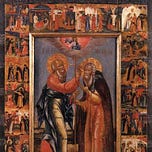



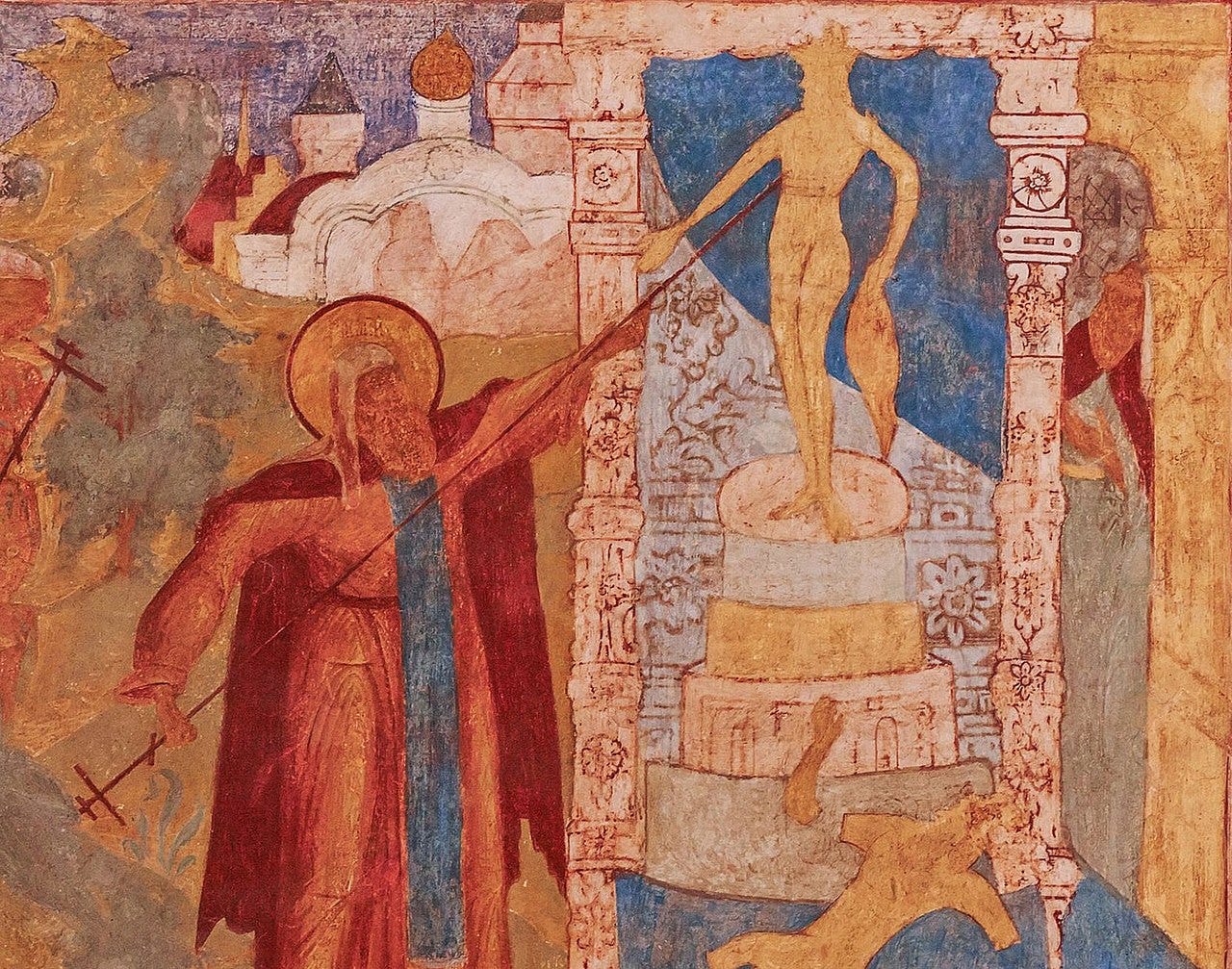

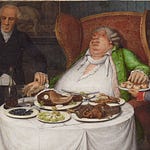


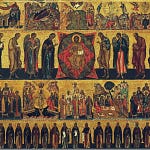


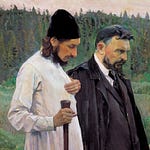

Share this post